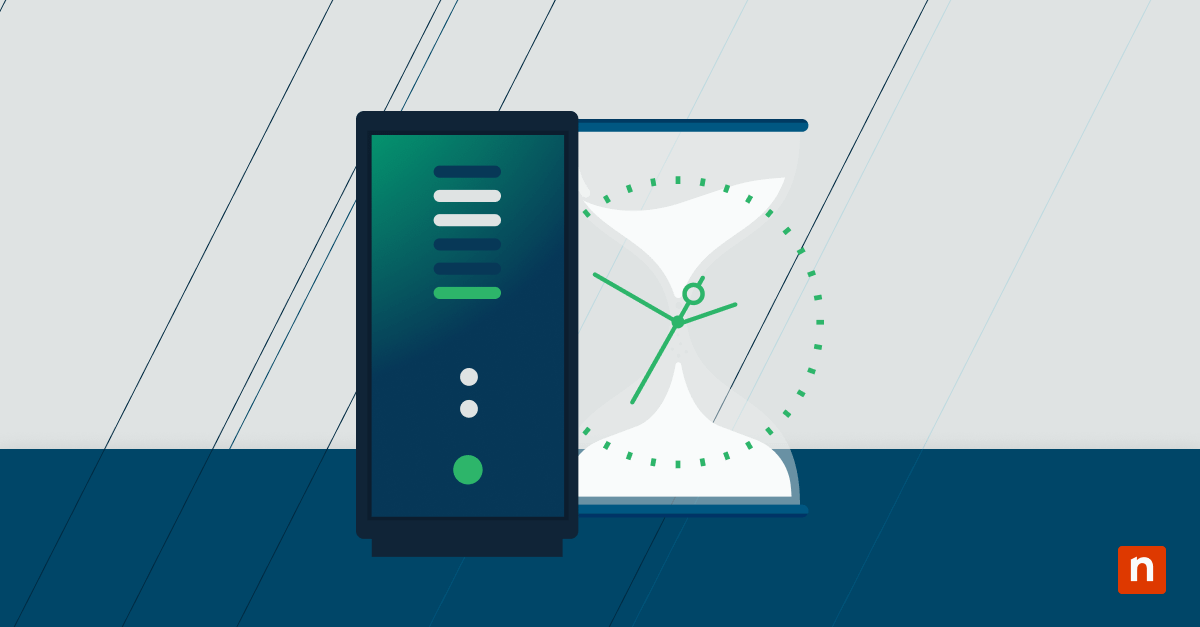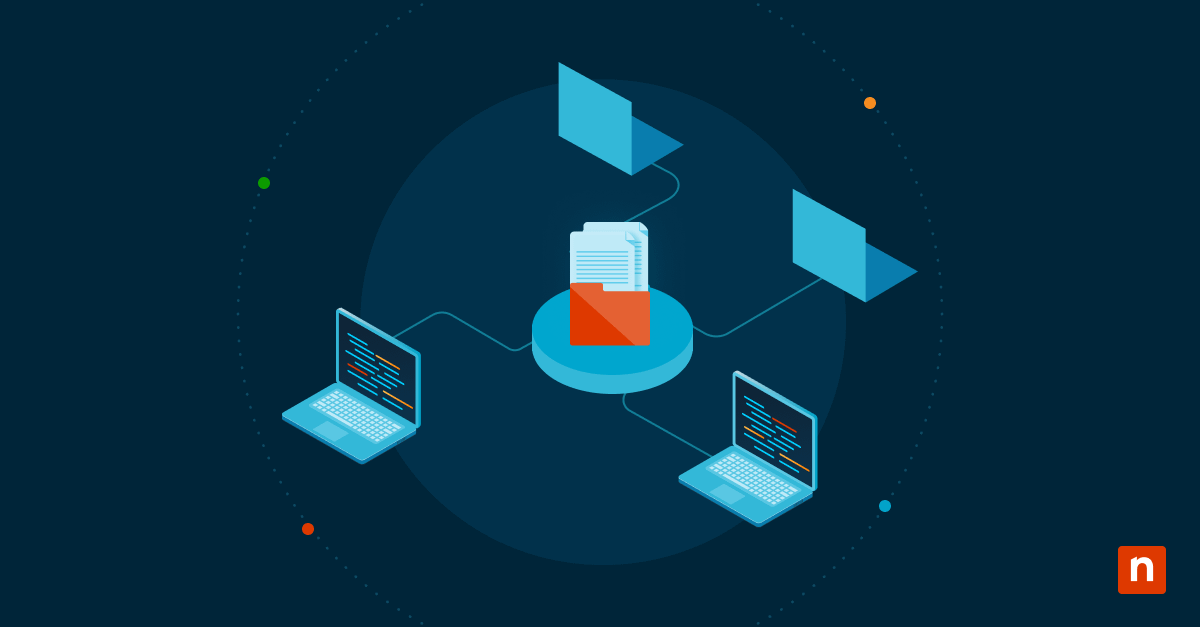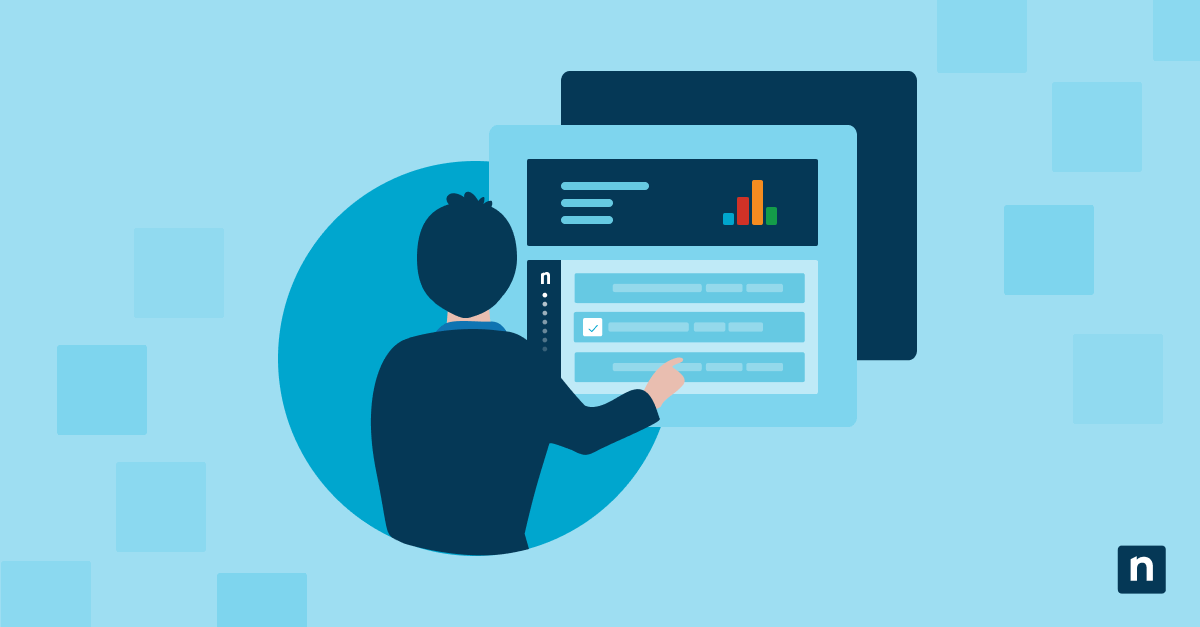As an IT professional, you face many endpoint management challenges. With more and more devices and expanding networks, you must adapt your approach to keep things secure, efficient and compliant. Recognizing and addressing these problems will help you develop effective solutions for your organization’s evolving needs.
What is endpoint management?
Endpoint management is the monitoring, maintenance, and security of devices connected to your company’s network. This includes computers, mobile phones, tablets, servers, and IoT devices.
Good endpoint management is essential to keeping your organization’s IT infrastructure safe. You must oversee a wide range of tasks, from software updates and security patch deployment to access control and data protection. Effective endpoint management also means keeping an eye on everything in your network, regardless of device location or type.
Optimize your endpoint management with NinjaOne Unified platform for IT professionals and MSPs.
7 endpoint management challenges
You’ll likely face these seven key endpoint management challenges across your network:
Endpoint management challenge 1: Increasing complexity of IT environments
Gone are the days of uniform company-issued desktop computers. You now deal with a diverse array of devices, operating systems, and applications, and manage Windows, macOS, and Linux machines alongside iOS and Android mobile devices. Add IoT devices and cloud-based services and you face a complex mix of endpoints.
Each device type and operating system may need different management tools and approaches. Your endpoint management solution must handle this mix without creating security gaps or isolated systems.
Endpoint management challenge 2: Scalability issues
As your organization grows, so does the quantity of your endpoints. This challenge extends beyond simply managing more devices; it also means maintaining control, visibility, and security across an expanding network.
Your endpoint management solution needs efficient scaling capabilities to handle increased device numbers and geographic spread. You might need to deploy local management servers in various locations or use cloud-based solutions that scale easily based on your needs.
Endpoint management challenge 3: Compliance and regulatory challenges
Data privacy regulations like GDPR, HIPAA, and CCPA make compliance across all endpoints critical. You must prove you control how data moves across all network devices. This challenge grows when different regulations apply to various parts of your organization or data types.
You’ll need to implement adaptable policies and controls while maintaining a unified management approach. Staying up-to-date with changing regulations is important, so update your policies regularly. This might include auditing your endpoint management practices, documenting your compliance efforts and potentially investing in specialized compliance management tools.
Endpoint management challenge 4: Integration with existing systems
Your endpoint management solution must work seamlessly with your current IT infrastructure, including network management tools, security systems, and identity management solutions.
You may encounter integration challenges when connecting new endpoint management tools with older systems, requiring you to bridge gaps between vendor ecosystems or address compatibility issues between software versions.
Endpoint management challenge 5: Lack of visibility and control
Remote work and Bring Your Own Device (BYOD) policies make it harder to maintain visibility and control over all endpoints. You may struggle to track which devices access your network, their software, and their compliance with security policies.
This visibility gap can create security blind spots, making it more difficult to detect and respond to threats. You may also find it challenging to ensure all devices receive proper updates and conform to organizational standards.
Endpoint management challenge 6: Cost management
Endpoint management can significantly impact your IT budget. Beyond initial purchase and deployment costs, you face ongoing expenses like licensing fees, maintenance, and resources for system updates.
You will need to balance these costs with comprehensive endpoint management needs. Careful evaluation of different solutions helps you find the right mix of functionality and cost-effectiveness for your organization.
Endpoint management challenge 7: Keeping up with evolving threats
The threat landscape changes constantly as new vulnerabilities and attack vectors emerge. Your endpoint management strategy requires quick adaptation to these evolving threats.
Simply deploying security patches is not enough; you need a system that detects new threats, isolates affected endpoints, and rolls out updates or policy changes across your network in response to emerging risks.
Secondary endpoint security challenges
In endpoint management, you also face specific secondary endpoint security challenges related to your devices:
- Vulnerability to malware and ransomware: Endpoints are prime targets for malware and ransomware, with a single infected device potentially compromising your entire network. You need robust anti-malware solutions on all endpoints and strategies for rapid detection and isolation of infected devices.
- Phishing attacks: Phishing remains a common attack vector that is getting more sophisticated by the day. Your endpoint management strategy should include email filtering, user education, and controls to prevent access to known malicious sites.
- Insider threats: Internal threats, whether malicious or accidental, can cause significant damage to your organization. Your endpoint management solutions should monitor user behavior, control access to sensitive data, and allow you to quickly revoke access when necessary.
Endpoint management best practices
You can address these challenges by implementing several endpoint management best practices.
Regular software updates and patch management
Keep all endpoints current with the latest software versions and security patches. Use an automated patch management system to deploy updates efficiently across your network with minimal user disruption.
Establish a testing process for patches before widespread deployment so they don’t cause conflicts or performance issues.
Comprehensive endpoint security strategies
Implement a layered security approach. Include antivirus software, firewalls, intrusion detection systems, and data encryption. Apply these security measures consistently across all endpoints.
Consider implementing a zero-trust security model, which assumes no user or device should be trusted by default, even if they’re already inside your network perimeter.
Training and awareness programs
Educate your users on endpoint management best practices. Teach them to identify potential threats and respond to suspected security incidents. Conduct regular training sessions to reinforce these skills.
Additionally, you can use simulated phishing campaigns to test and improve your users’ ability to recognize and report suspicious emails.
Implementing access controls
Use the least privilege principle to limit user access to only the resources they need. Implement strong authentication methods, including multi-factor authentication (MFA) where possible.
In addition, a privileged access management (PAM) solution controls and monitors employee access to critical systems and sensitive data.
Continuous monitoring and response
Monitor all endpoints in real-time to quickly detect and respond to potential threats. Set up automated alerts for suspicious activity and develop a clear incident response plan. Use a security information and event management (SIEM) system to centralize log data and improve your ability to detect and respond to security incidents.
Strengthen your IT infrastructure’s security posture with NinjaOne solutions.
SOC and endpoint management
Your Security Operations Center (SOC) plays a crucial role in effective endpoint management. A SOC works closely with your endpoint management team for a coordinated security approach. This collaboration should include threat intelligence sharing, coordinated incident response and joint development of security policies.
Integrating endpoint management with broader security operations creates a more robust and responsive security posture. Look into security orchestration, automation and response (SOAR) tools to streamline and automate your incident response processes.
Vigilance in endpoint management
Keeping up with your endpoint management challenges requires ongoing attention and flexibility. By understanding the potential challenges and following best practices, you can protect your organization’s digital assets, maintain compliance, and support workforce productivity. Stay vigilant and adjust your strategies as technology and threats evolve to keep your endpoints secure and efficient.
Don’t let endpoint security challenges overwhelm your IT team. Centralized endpoint management solutions like NinjaOne can streamline your efforts, enhancing service delivery by allowing you to monitor, manage, secure and support all your devices, regardless of location — and without a complex on-premises infrastructure. Ready to tackle your endpoint management challenges head-on? Start your free trial of NinjaOne today and transform your IT security.
Endpoint management challenges FAQs
1. What are the emerging trends in endpoint security?
There are several emerging endpoint security trends that organizations need to explore, including Zero-trust security, Extended Detection and Response (XDR), utilization of biometric authentication methods, cloud-based security solutions, and more.
2. How to ensure efficient management of endpoints in hybrid work environments?
Organizations needed to adapt to the rapid emergence of hybrid work setup post-COVID. This encompasses enforcing effective endpoint management used by their staff and employees.
Some of the best practices for endpoint management in hybrid work environments include establishing clear policies for remote and on-site devices, employing endpoint detection and response (EDR) solutions, and implementing regular updates and patches. This can be done by utilizing tools such as a centralized IT management solution to maintain the visibility and security of the whole infrastructure.
3. How do endpoint management strategies differ for SMBs versus large enterprises?
SMBs often rely on simpler, cost-effective solutions, while enterprises require comprehensive systems that integrate with complex IT infrastructures. A scalable IT management platform can offer robust endpoint monitoring and management solutions regardless of business size.
4. What role does endpoint management play in backup and disaster recovery planning?
Backup and disaster recovery can be tricky and tedious. A reliable endpoint management solution can be helpful with this undertaking, ensuring that devices are backed up and can be restored quickly. This practice can aid in data loss prevention, business continuity, and enhanced productivity.
5. How can organizations prevent unauthorized device connections to their network?
Enforce network access control (NAC), deploy strong authentication methods (e.g., multi-factor authentication), and create policies restricting unapproved device use.
6. What are the most common misconceptions about endpoint management?
A common misconception is that antivirus software alone is sufficient. Effective endpoint management requires monitoring, patching, and securing all connected devices, not just protecting against malware.
7. What key metrics indicate the success of endpoint management efforts?
Multiple metrics are indicative of the success of endpoint management efforts. These include Mean Time to Detection (MTD), Mean Time to Response (MTR), Mean Time to Recovery (MTTR), instances of security incidents, and security breach costs, among others.








